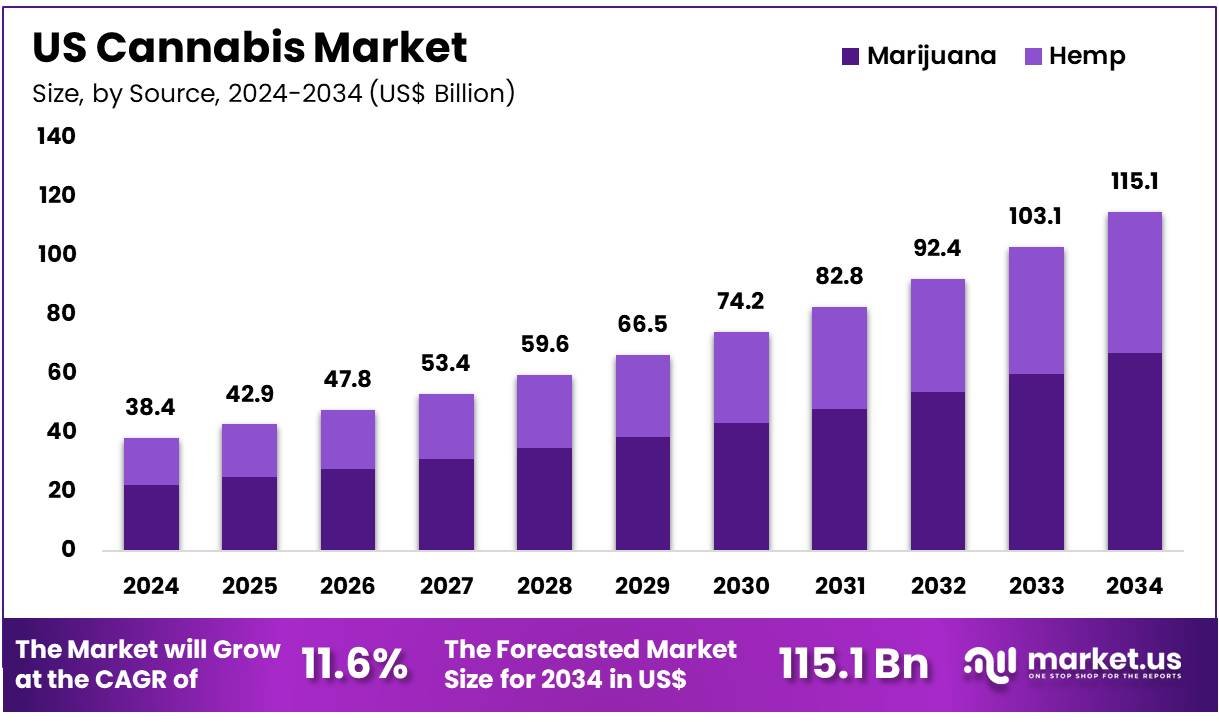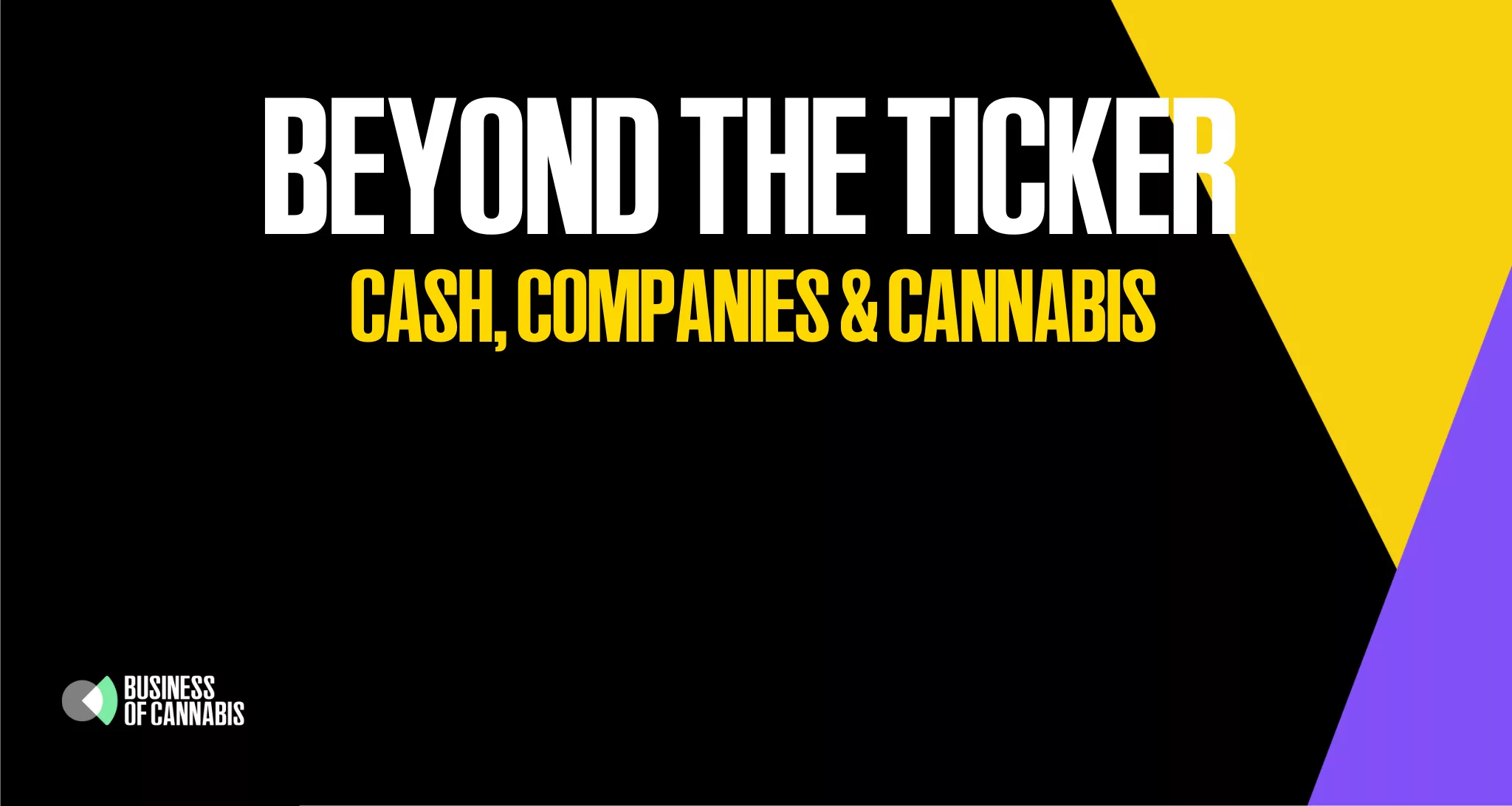The US cannabis market is on track to reach approximately $115.1 billion by 2034, up from $38.4 billion in 2024, representing a compound annual growth rate (CAGR) of 11.6% from 2025 to 2034. This growth is largely fueled by increasing consumer demand for wellness products and the rising acceptance of cannabis for both medicinal and recreational purposes.
Cannabis is becoming a popular choice for various applications, including pain management, stress relief, and mental health support. The market for cannabis products, such as oils, tinctures, edibles, and topicals, is expanding as states continue to legalize cannabis for medical and recreational use. For example, in June 2024, Rodedawg International Industries, Inc. launched a new line of Nutrient CBD products, which includes CBD oil tinctures, topical creams, and roll-ons aimed at consumers seeking plant-based wellness options.
The demand for cannabis health and beauty products is on the rise, alongside an increasing number of dispensaries that cater to this growing market. Cannabis-infused products, including beverages and edibles, are also gaining traction, as consumers explore alternative consumption methods. Moreover, advancements in cultivation and extraction technologies are enhancing product quality and yield, opening up more opportunities for companies in the sector.
Key market segments reveal that the marijuana sector accounted for 58.3% of the market share in 2023, driven by growing demand for recreational and medicinal products. In terms of derivatives, CBD dominated with a 63.4% share, reflecting the increasing awareness of its therapeutic effects. The indoor cultivation segment led with a 52.5% revenue share, attributed to better environmental control resulting in higher-quality cannabis products.
The recreational use segment also showed substantial growth, capturing 55.7% of the market as legalization spreads. States continue to enact laws permitting cannabis use, creating new legal markets and expanding existing medical programs, which in turn allows consumers regulated access to cannabis products. By early 2024, 38 states and the District of Columbia had legalized cannabis for medical purposes, while 24 states permitted non-medical use, broadening the potential consumer base.
However, federal illegality remains a barrier for the cannabis industry. Cannabis is still classified as a Schedule I controlled substance under federal law, complicating access to banking services and creating challenges for interstate commerce. Additionally, the 280E tax code restricts cannabis businesses from deducting ordinary expenses, further limiting profitability.
Despite these challenges, the potential for federal policy reform offers new opportunities for growth. Changes in federal law, such as rescheduling cannabis, could enable traditional banking access, interstate commerce, and tax code revisions, thus fostering investment and a more favorable business environment.
Macroeconomic factors also play a role, as inflation and disposable income levels directly impact consumer spending on cannabis products. While economic pressures may affect purchasing power, legal cannabis markets continue generating substantial tax revenue for state governments, providing a stable income source.
Trends towards social equity initiatives are influencing the market as states implement provisions to help marginalized communities participate in the cannabis industry. These initiatives create opportunities for individuals from these communities through funding access and reduced barriers for entry into the legal market.
Key players in the US cannabis market are expanding their reach through mergers and acquisitions, geographic expansion, and product diversification. Curaleaf, for example, has grown its market presence significantly through strategic acquisitions, including the purchase of Grassroots Cannabis, while focusing on innovation and customer education.
As the cannabis market continues to evolve, it presents numerous opportunities for growth and innovation, driven by changing consumer preferences, expanding legalization, and ongoing research into the health benefits of cannabis.




